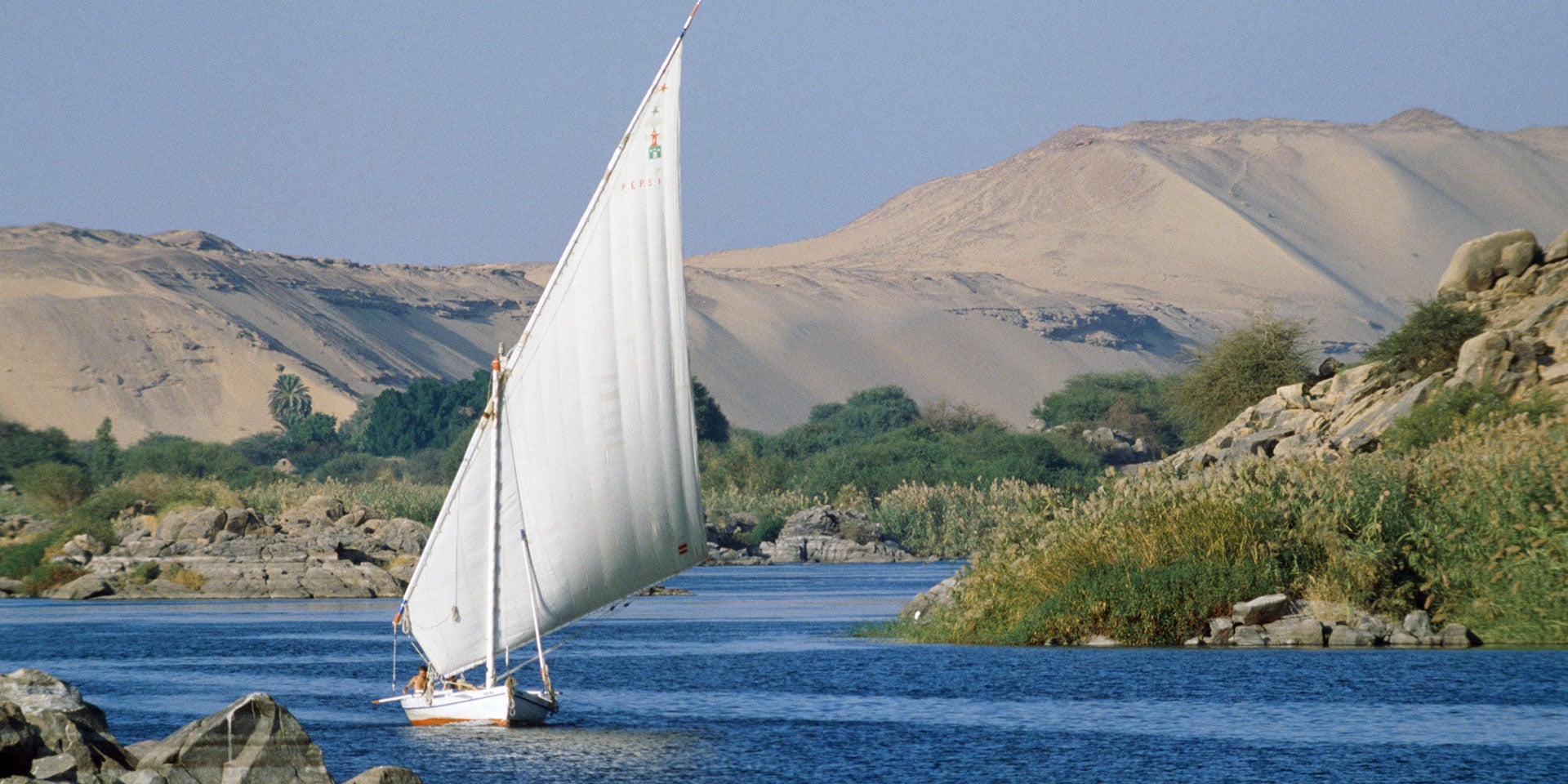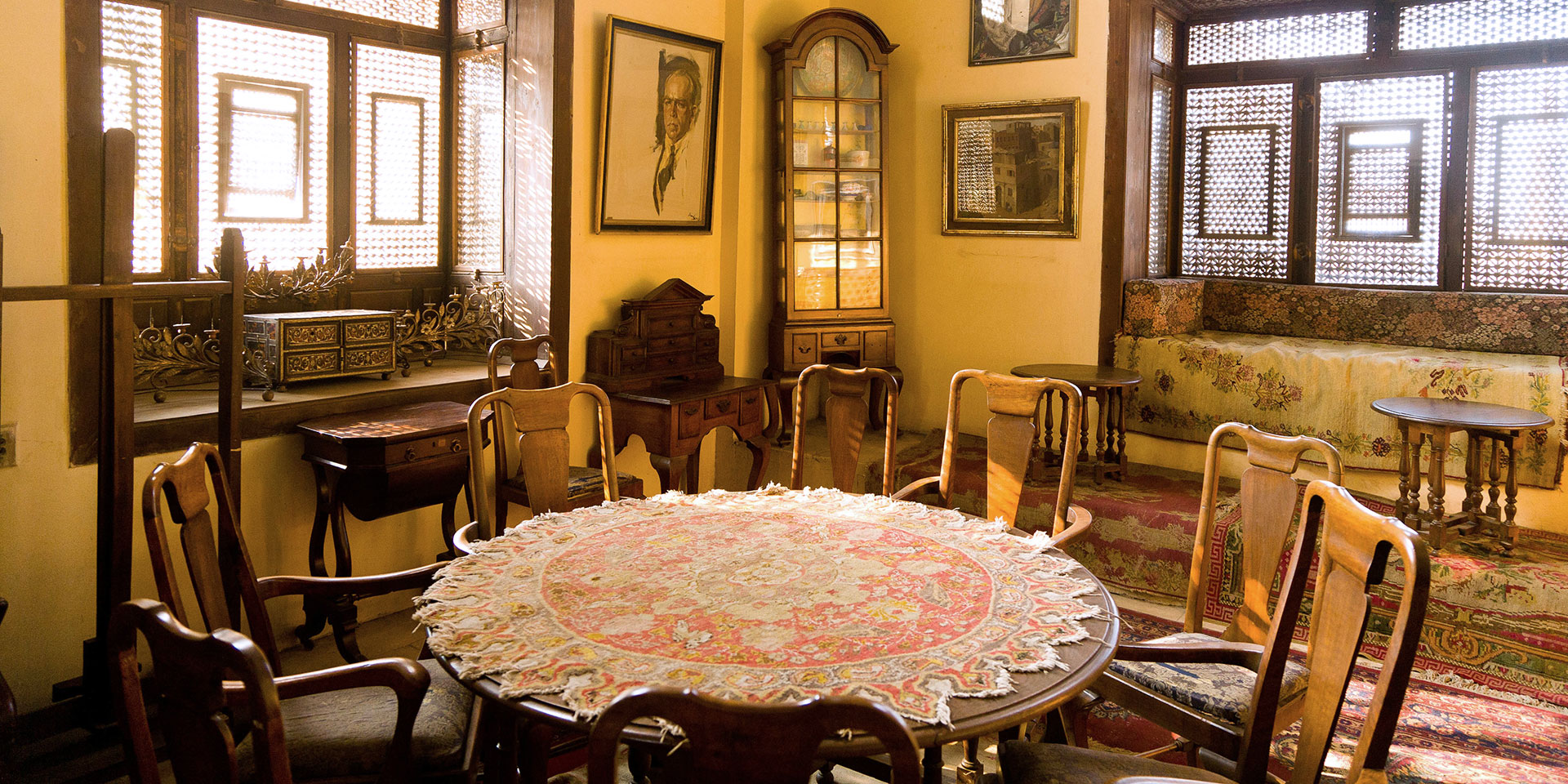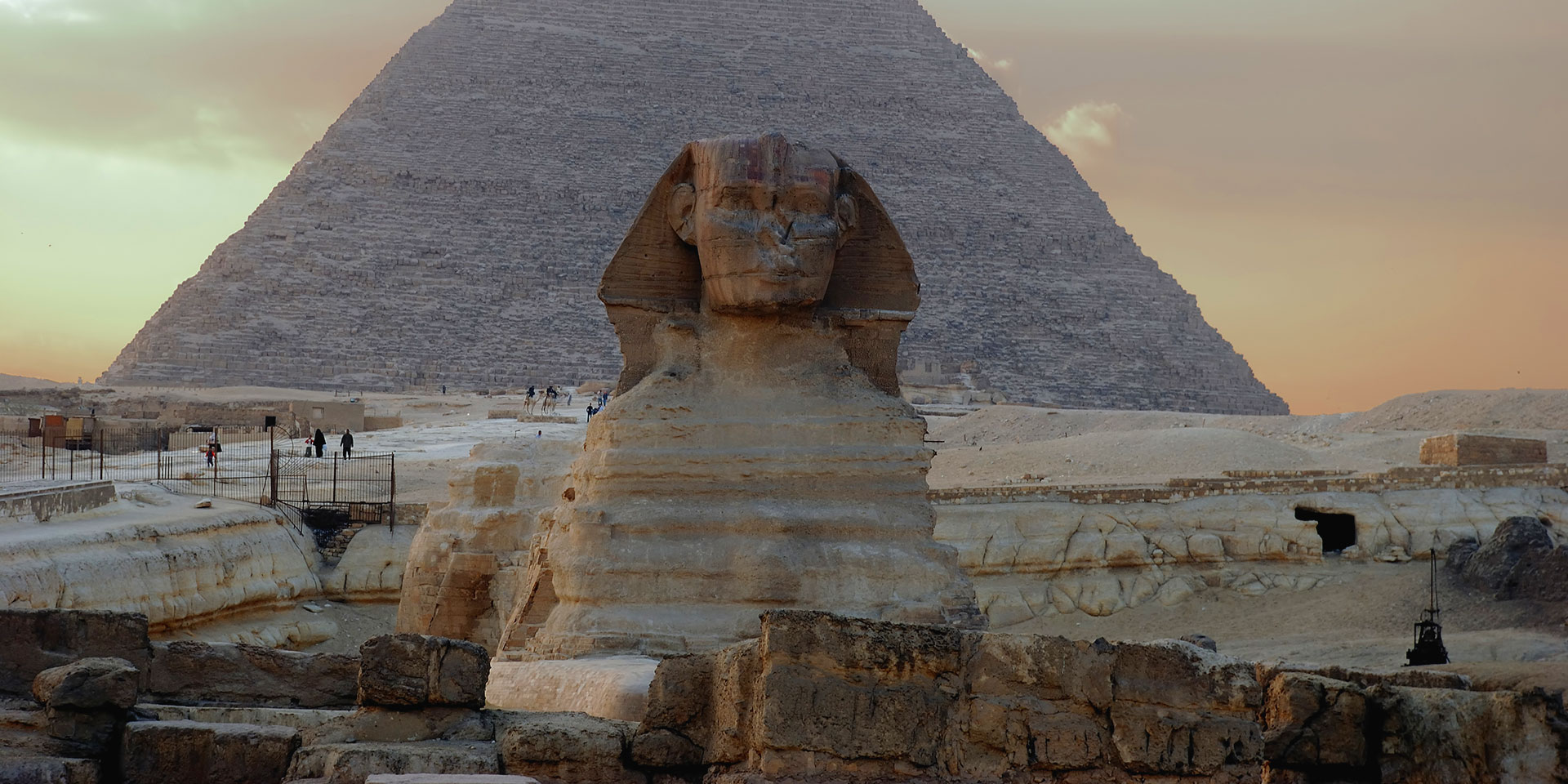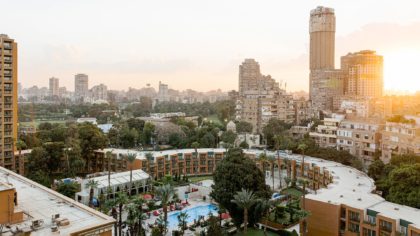History still oozes out of every corner of Cairo, though the city remains firmly intertwined with modern life. To truly experience the vibrant heart and soul of Egypt’s capital, these essential stops will leave you appreciating all its many — and complicated — layers, from ancient history to the eternal Nile.
As always, check for travel restrictions and closures before planning your trip.
Memphis and Its Necropolis
You’ll see them in photos and blockbuster films, but nothing compares to actually standing dwarfed by the regal Sphinx and the three pyramids of Giza as the world continues to argue about how on Earth (or was it by aliens?) they were built.
Of the other monuments in the sprawling complex, the most unusual — some say unforgettable — is King Khufu’s ship parked in the Giza Solar Boat Museum.
A pre-booked guide will help you navigate the area and keep the benign but overly eager scammers at bay. You’ll want comfortable shoes, a hat and a little fan should you choose to enter the pyramids’ chamber — it’s called a necropolis for a reason.
Sometimes enormous things are best seen from a distance. Plan for lunch at the 139 Restaurant in the Marriott Mena House, Cairo and savor the jaw-dropping pyramid views as well as a menu of international dishes.
The Egyptian Museum
It’s easy to lose track of time amid thousands of artifacts at the Egyptian Museum, from tiny earrings to towering sculptures, but be sure to spend a good while admiring the treasures of King Tut’s tomb.
The 1902 building sits dead center on Cairo’s map — just off the famous Tahrir Square and practically in your backyard if you’re staying at The Nile Ritz-Carlton.
The Pharaonic Village
A trip to The Pharaonic Village makes Cairo’s history more interactive and theatrical. Hop on the boat tour to see reenactments of scenes from Ancient Egypt, taste freshly baked baladi bread and customize pottery and handblown glass to take home.
Khan El-Khalili Bazaar
Find the soul of Cairo’s aesthetic in Khan El-Khalili’s passages. The dynamics in this ancient souk are pretty much the same as in 14th-century Cairo, and the space still bustles to this day.
For locals and tourists, this is the spot to shop for local artisan products: leathers, fabrics, spices, silverware and a million options for souvenirs to take home.
Stop for lunch or an Arabic coffee at the Naguib Mahfouz restaurant, a crowd favorite with its lavish Arabic decor.

Spend Time Along the Nile
You don’t need to actually “drink from the Nile River to be destined to return,” as the saying goes. But you do need to hop aboard a felucca, a traditional sailboat, in time to catch the sunset. Consider this your portal back to the present, honoring the ancient waterway as you glide past modern Cairo.
El-Moez Street
A walk through the historic El-Moez Street is simply mandatory. This open museum of Islamic Cairo also has several spaces hosting cultural events in the evenings. Look for Beyt El-Sehemi and El-Rabaa.
El-Moez is bookended by the medieval city gates. Bab Zuweila, the southern gate, treats you with a panoramic view when you climb its (really steep) minaret stairs.
The Citadel
Take photos with that beautiful silver-domed building on the Egyptian 20-pound note by visiting the Mosque of Muhammad Ali at the Citadel of Salah El-Din.
After gaping at the view from the hilltop, explore the Military Museum for a dose of violent history.
During August you can catch the Citadel’s annual music festival and listen to top Arab bands and singers in the open air.
Mosques
It’s unfair to choose a favorite among Cairo’s plethora of ornate mosques. Some of the grandest are Sultan Hassan, El-Refai and the Ibn Tulun — Egypt’s largest and the world’s third-largest mosque.
These spaces are open for non-muslims to visit. But if you choose to visit, remember to dress conservatively to respect religious customs, as they are active places of worship for locals.

For a bonus side trip, pay a visit to the Gayer-Anderson Museum, which shares a wall with Ibn Tulun mosque. This gorgeous house turned museum is a rare glimpse into 17th-century Islamic domestic architecture, showcasing art and artifacts from personal collections.
Where Three Religions Meet
Judaism, Christianity and Islam have left their marks within walking distance of each other at the Religious Complex, a section of Old Cairo that houses churches, mosques and a synagogue.
The Ben Ezra Synagogue is rumored to be built on the spot where baby Moses was found in the old canals. The interior has a lavish Ottoman influence, making it a rarity among Jewish structures.
Jesus, Mary and Joseph are also believed to have rested on their journey in this area, hiding in a cave that is now part of St. Sergius and Bacchus Church. Explore the network of churches in the area, and be sure to look up when you enter the famous Hanging Church to see its wooden dome that mimics Noah’s Ark.
Finally, Amr Ibn El-Aas, the first mosque built in Egypt (and Africa), also sits in this triangle and offers a spacious, cool courtyard should you need a moment of zen away from Cairo’s persistent bustle.
Insider tip: Be sure to shop at Souk Al-Fustat nearby for traditional handicrafts of excellent quality.




